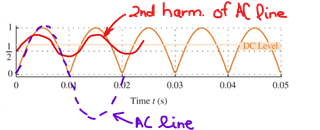Other Parts Discussed in Thread: UCC2818, UC2854
Tool/software:
Hi TI team,
I have following requirements
- Input voltage -100Vrms to 134Vrms
- Frequency- 360Hz to 800Hz
- output voltage- 400V
- output power 100W
I am planning to UCC2818-EP PFC IC.
Do i have to change any parameters in the IC pin except Vff filter capacitor to work properly at 400Hz.
Please advice.




